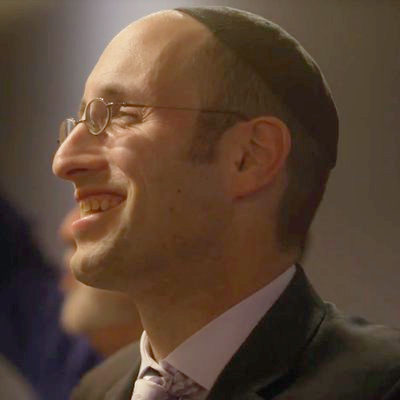Episode 1
Episode 1: Jewish Time – From Alaska to Jerusalem
About the Course
The rhythm of the Jewish year is defined by the holidays. The month of Ellul is one of introspection and repentance because Rosh Hashanah and Yom Kippur are near; Nissan is joyous because on Passover Jews remember how God took them out of Egypt; Av is sad and mournful because on Tisha b’Av Jews think back to the destruction of Jerusalem and their Temple. In this online course, Rabbi Meir Soloveichik delves into how those sacred Jewish times—the festivals, the fast days, the days of judgment and joy—illuminate the Jewish understanding of time and of life. With episodes on the honey of Rosh Hashanah and the repentance of Yom Kippur, on the palm frond of Sukkot and the miracles of Hanukkah, on the costumes of Purim and the new festivals of modern Israel, there is no better way to learn what makes each Jewish holiday a unique and sacred occasion.
Course Resources
Explore Rabbi Soloveichik's other online courses!
Click here to view all of Rabbi Soloveichik's full-length audio and video courses.
Twelve Tantalizing Episodes
To understand Jewish time is to understand the Jewish way of life. Follow Rabbi Soloveichik as he walks you through the Jewish year in the way only he can.
Episodes
What is the Jewish idea of time? How can it be made sacred? Rabbi Soloveichik ties together three incredible stories about Hasidim in Alaska, former Israeli Prime Minister Menachem Begin, and former refusenik Natan Sharansky.
Is Rosh Hashanah really best understood as the “Jewish New Year”? What is the relationship between British royalty and this esteemed Jewish holiday? What can Ashkenazi Jews learn from their Sephardic brethren about the holiday’s deeper meaning?
Rabbi Soloveichik explores Judaism’s “Day of Atonement,” the holiest day on the Jewish calendar. Does the process of repentance, wherein we recall our many failings, year after year, mean that man is inherently bad or “fallen”? Is there truth in the claim that man is merely a material being, wholly determined by his irrepressible urges? The Jewish holiday of Yom Kippur, rightly understood, offers a resounding “no”—and conveys a message of faith and hope in the divinely-given purpose of man.
Sukkot appears profoundly out of place in today’s world—the dwelling in huts, the hoisting of palm fronds aloft—one might regard it as an anachronism, or irreconcilable with modernity. What can it mean to contemporary Jews?
In the Hebrew Bible, the Jews are described as a chosen people—but what are they chosen for? Rabbi Soloveichik explains that each of Judaism’s two types of sacred time, Shabbat and the Jewish festivals, exemplifies a unique aspect of the Jewish calling.
Families on Hanukkah gather together and celebrate around dreidels, chocolate coins, and presents. Yet the holiday’s most profound meaning is in its core symbol and ritual: the lighting of the menorah. Rabbi Soloveichik takes us through Hanukkah’s two pivotal historical stages, the age of the Temple and the age of Diaspora, teaching us about the triumph of monotheism and Judaism, and the lessons Hanukkah’s miracles hold for anyone who cares about Jewish survival.
Today, Tu Bishvat has evolved into a kind of Jewish Earth Day. Yet the holiday’s contemporary transformation teaches us more about the crisis of modern identity than about the day’s authentic meaning. Rightly understood, Tu Bishvat’s history and traditions remind us of the roots of Jewish identity and its rootedness in the Land in Israel.
Purim is a holiday marked by levity, costumes, and celebration. Yet its ultimate premise is deadly serious. It asks us to recognize not only that Haman exists in every generation, but also that our Jewishness binds us to one another, whether we like it or not. Purim is, in other words, the holiday of Jewish solidarity.
Passover, the Jewish festival of freedom, has extraordinary insight into the nature of liberty. Modeled after President Franklin D. Roosevelt’s “Four Freedoms,” Rabbi Meir Soloveichik delineates a more ancient set of four freedoms which derive from the Hebrew Bible and lay at the core of the Passover Seder and its rituals. These are the freedoms that Jews and all Americans must rediscover for the sake of their own spiritual health and political vitality.
The declaration of Israeli independence and the Israeli victories in 1967 were two of the most significant moments in Jewish History. But what does it mean to mark these moments as holidays, to commemorate and celebrate them as part of the Jewish calendar year? And how does Jerusalem Day allow us to fully understand the very meaning of Jewish statehood itself?
On Shavuot, Jews celebrate receiving the Torah at Sinai. With all its commandments, the Torah is the source of Jews’ most profound joy. But how can law, so complex and didactic, be a source of joy and inspiration that leads to an encounter with God?
Today, the Jewish state is restored and Jerusalem is in our hands. Why do we still mourn ancient Jerusalem’s destruction when we have so much to celebrate?

